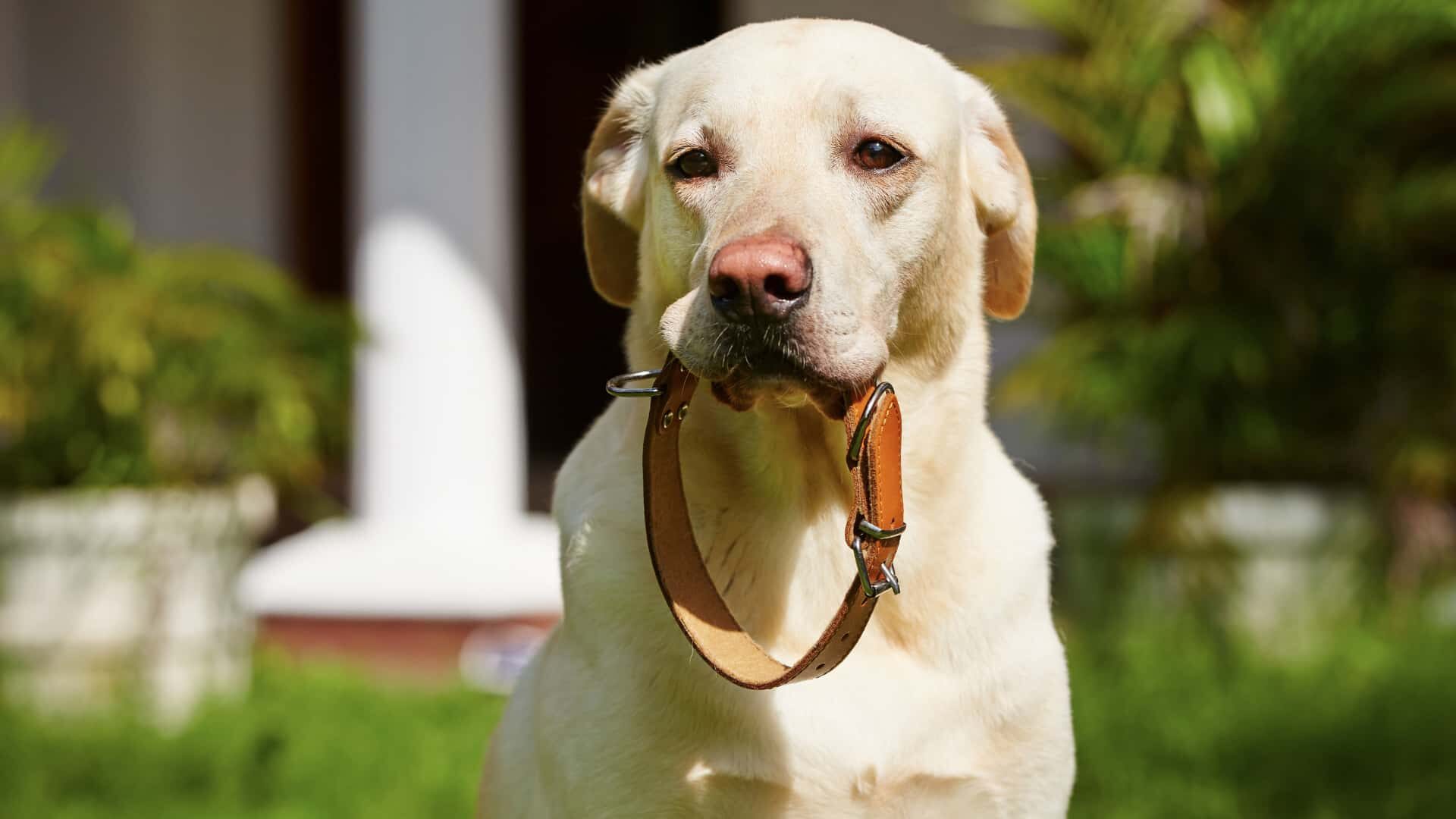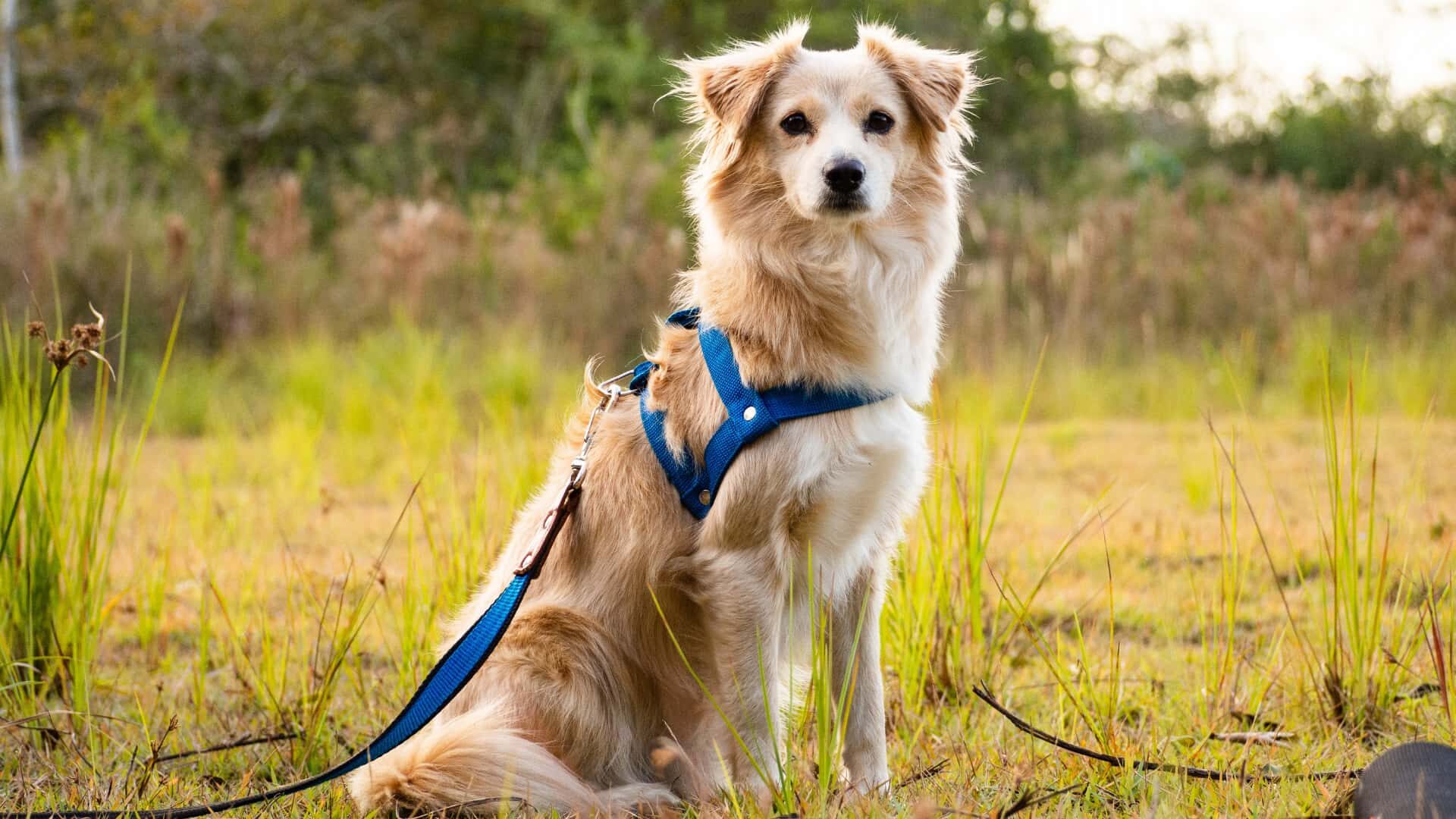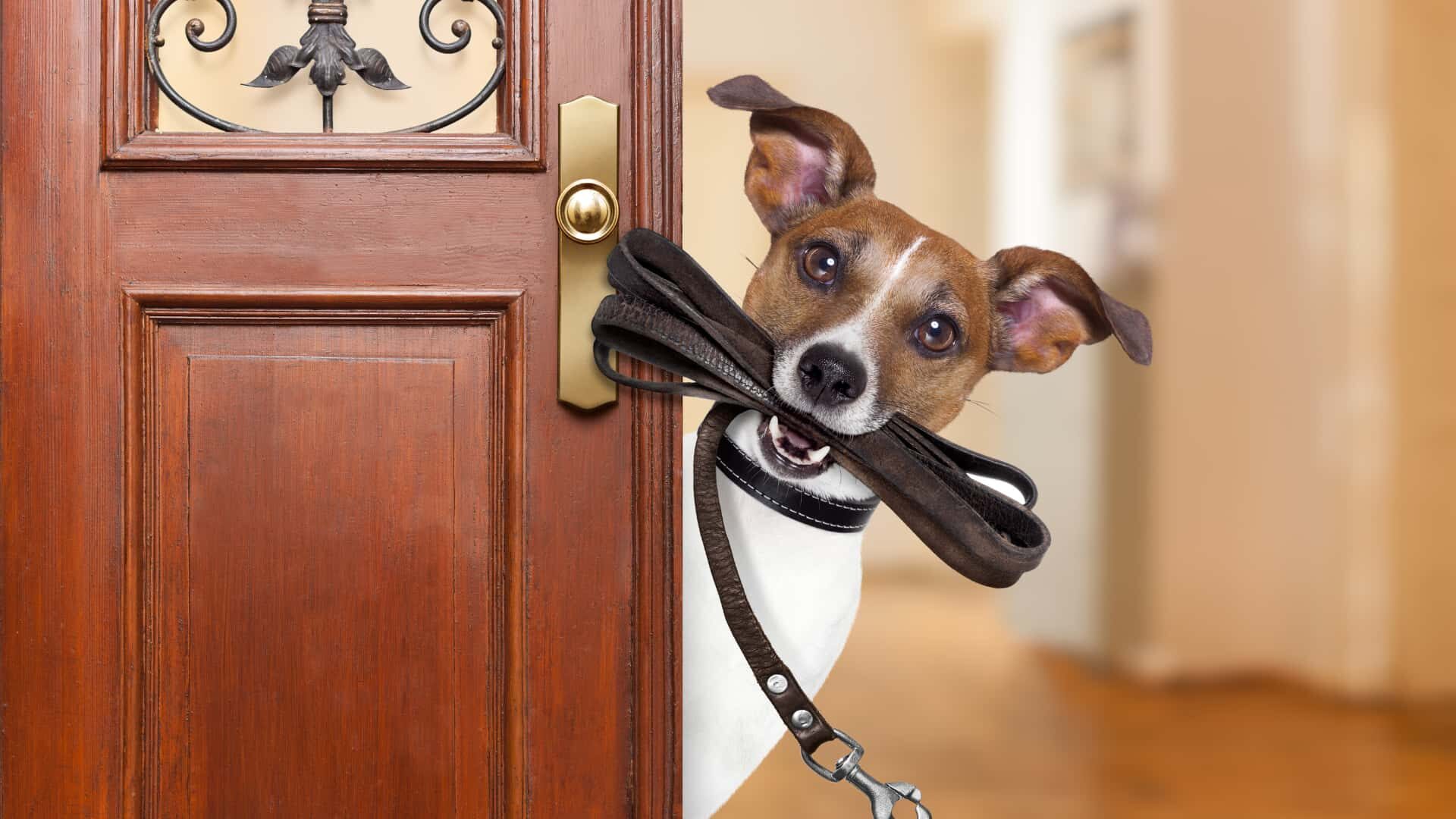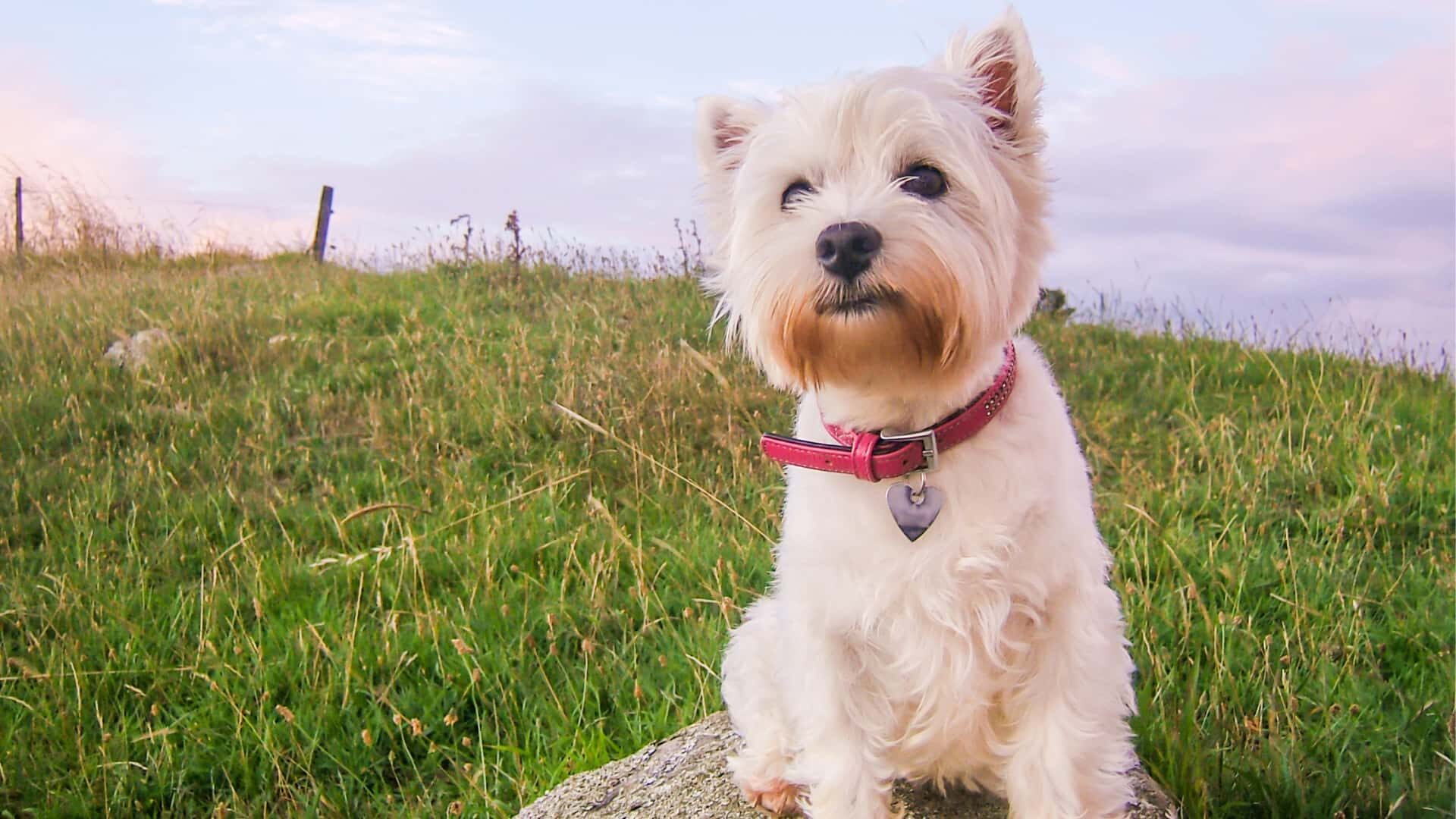First, make sure the collar fits properly if your dog continues breaking out of it. It ought to be possible to slide two thumbs under the collar. If you can fit anything else, it’s too loose. Assuming the standard collar is a good fit, a martingale collar is the next best thing.
Is your dog acting like he or she could be part of Houdini? Do you feel uncertain about whether or not to go out and get a new collar? When your dog continues getting out of the collar, it may be irritating and even scary.
If your dog continues sliding out of the collar, we will go through some of the best tips and tactics to make sure the collar remains secure yet is still comfortable.
Is your dog a professional collar-slipper, or is the collar itself defective? When a squirrel is around, some dogs are able to escape from any collar. It’s not the dog itself that causes the issue so much as it is the collar.
Why does my dog keep slipping out of collar?

Perhaps the collar your dog or cat wears is too restrictive. When you put the collar on, he knows it’s time to go on a walk, but when you take it off, he becomes even happier. It might cause discomfort by pressing on his chin, irritating the skin of his neck, and making it hard for him to swallow. First, you need to figure out whether your dog escapes from a harness because he or she can slide its shoulders free or because he or she chews through the straps.
You should get an escape-proof harness if your dog has a habit of slipping out of its collar. The likelihood of your dog escaping may also be minimized by using the t-shirt technique or by attaching a carabiner to the harness and collar. Invest in a harness made of sturdy materials with straps beyond your dog’s reach if he or she tends to chew through leashes to escape.
1. They unbuckled the harness and freed their shoulders
In order to use the sliding-out shoulder technique, the dog has to have a lot of mobility. Expert dogs in this technique often escape the harness by pulling back. By pushing back on the leash, you may help your dog slide their elbows, shoulders, and finally their head through the straps.
2. Biting through the seatbelt straps
This technique is for dogs who don’t want to twist and turn to free themselves from the harness. These canines like breaking through with their teeth and jaws. If your dog has a habit of chewing through their harness, one solution is to get a harness made of very tough fabrics, only use the harness while out for walks, and spray the harness with no-chew dog bitter spray.
3. Injurious munchers
A dog may easily escape from a harness if it has been chewed. The harnesses might become extremely slack or even shatter due to the weaker fabric in certain areas. If your dog is a destructive chewer, you should get a new harness made of very durable materials and in a design that is hard to reach when placed on to prevent your dog from sliding out of the harness.
4. Dogs with nerves of steel
Dogs that are easily startled may escape their harnesses because they don’t feel secure in them. Dogs who have been rescued often have this problem since they are not used to wearing harnesses. Put forth the additional time and effort to prevent your anxious dog from escaping the harness.
Begin the process of acclimating your dog to the harness at home by rewarding him with goodies. You should encourage your dog to investigate the harness and praise him for his positive behavior. Train your dog to accept the harness in little increments. Get some indoor walking in before venturing outside. Don’t stop rewarding your dog while he’s walking well and not trying to escape his harness. If you want more tailored guidance for your dog, you can also check out this dog walking training video.
5. Pooches that are leggy and have little heads
Standard dog harnesses are made to accommodate a variety of dog sizes and shapes. However, different dog types need different sizes and styles of harnesses. Dogs with long necks, thin bodies, or supple forelimbs may easily escape a harness and run amok.
A dog with a unique physique may slide out of a standard harness, so it’s important to choose one that fits properly. Then, you’ll need to retrain your dog to walk while wearing a harness by taking him or her on regular walks.
7 Tips for dealing with a dog that keeps getting out of collar

The experience of having a dog on a leash one minute and then letting it go without identification the next while holding an empty lead and collar is scary. Some dogs, whether because they are very intelligent, afraid, or aggressive, have made it a practice of removing their collars in order to get away.
Narrow-headed dog breeds are more likely to be able to master the “trick” of removing their collars, although any dog may do it provided the collar is sufficiently lax. There are a few things you may do if your dog constantly attempts to get free of her collar.
Putting your dog in the “cone of shame,” a huge, bulky piece of plastic worn after surgery or an accident to keep him from further harming himself, is a necessary evil. However, it is challenging to coexist with him at the moment. Listed below are some suggestions to assist you and your dog get through this ordeal unscathed.
1. Take the role of his leader
Your role as a dog owner is analogous to that of a guide dog in guiding a visually impaired person around the environment. He needs your assistance in improving his vision so that he doesn’t keep running into things like walls, stairs, doors, and your legs. Make careful to coax him toward the middle of doorways and corridors, so he doesn’t bump against anything.
2. You must teach him to walk
Dogs have a tendency to walk with their noses to the ground, which may cause them to constantly bump the e-collar and get entangled in it if they have to wear the cone of shame. Put a snack up in the air above him. This will help him walk with his head up high and off the ground. Injuries or neutering shouldn’t put a halt to his training.
3. Facilitate food preparation
Depending on the size of your dog and his electronic collar, it may be difficult to slip his muzzle into a bowl of food. So that he has more space, move the bowl farther from the walls. If the cone is making it such that he can’t get his mouth near enough to the ground, you should get him an elevated bowl.
4. Reduce its use sparingly
There are occasions when it is necessary to remove an e-collar even if it is strongly recommended against doing so. There’s no need to keep the cone on your dog’s head if he or she is having trouble eating with it. Keep a tight eye on him as he eats, and then immediately replace it. Immediately replace it if he attempts to remove it to access his wound or stitches. Keep his collar on at all times, day or night, unless he is in direct visual contact with you.
5. You should stay away from the dog park
The first couple of days after surgery, your dog will be eager to go back to play, but he will need extra time to recuperate. Avoid taking him to locations where he could become too enthusiastic, like the park. Either he could hurt another dog with his e-collar, or he may rip out his sutures. Reduce the length and intensity of your at-home playing.
6. Vacant space, please
Cleaning up the home will make it easier for your dog to move about. You can get by without a coffee table for a few weeks, but put away any other furniture the dog may run into until the collar is removed. Place his bed in an accessible place, far from any obstacles he could trip over. Put away any fragile items as well.
7. Put him to sleep
While the e-collar is on, your dog shouldn’t be permitted to run amok or jump up and down on the furniture. Feel free to take him on many walks every day to help him burn off all that extra energy. When he’s exhausted, he won’t be as prone to rushing about the home and breaking things.
What are different types of collars for dogs?

Flat collar, head collar, prong collar—oh my! How can you choose the best dog collar from the plethora of models on the shelves of the pet store? Finding the appropriate collar might mean a safer and more pleasurable stroll for both of you.
Beverly Ulbrich, also known as The Pooch Coach, was the dog trainer we contacted about the benefits and drawbacks of different collars. Ultimately, “you want to have a trained dog and not have to use anything except a flat collar,” Ulbrich explains.
If you use any other collar, you won’t be able to solve the issue; at best, you’ll be able to manage it. Let’s take a look at the six most common collar styles, along with the benefits and drawbacks of each.
1. Flat Collar
Every dog owner has at least some experience with the ubiquitous and universally lauded flat collar. If a dog doesn’t lunge, pull, or otherwise misbehave in a manner that may cause harm to either the dog or the person, then Ulbrich’s recommendation that all dogs wear a flat collar is sound.
Tip from the Trainer: If you tug on the leash to catch your dog’s attention, he or she will learn to pull back, rendering the flat collar ineffective.
“If you pull back to gain their attention while they’re sniffing or tug on the leash to instruct your dog to sit, you’re attempting to manage your dog by pulling on the leash instead of directing him verbally,” Ulbrich says. “You’re training your dog, ‘you pull, I pull.'” When used correctly, it is easy on the dog’s neck. Dogs who pull too hard on a leash might accidentally strangle themselves.
2. Headgear Number Two
A head collar is comparable to a horse’s halter—it slides over your dog’s muzzle and connects behind his ears. Advantages include being able to divert your dog’s focus away from pulling. It can make the dog feel at ease and trust you more while you stroll together.
A dog’s head may be jerked if the tool is used incorrectly. Some dogs won’t stand still long enough to allow you to put it on, and they may even attempt to remove it themselves. Over time, the hair on a dog’s face may get worn.
3. Dog Collars and Harnesses
There are two primary kinds of harnesses: a front-clip harness, where the leash connects to your dog’s chest, and a rear-clip harness, where the leash attaches to your dog’s back. Many current harnesses have both features for your convenience.
Pros: Tension not on the neck. Dogs with short muzzles, like Pugs and Boston Terriers, may benefit from this.
Negatives: Leashes encourage aggressive pulling, which may be painful for dogs’ backs and make them difficult to manage.
What to do if your dog keeps getting out of collar?
Dogs might vary greatly in their enthusiasm for collars. A dog may find them uncomfortable or annoying. Your dog may want to rip it off or paw at it all the time. Collars are an inconvenience that is often necessary for pets. Collars are essential for the security of your pet and for the visibility of identification tags. So, how do you handle a dog who refuses to wear a collar? Here is how to deal with a dog that resists wearing a collar.
1. Adopting proper collar etiquette
It’s crucial that you always put your dog’s collar on when you take him out. A well-trained dog may willingly wear one. The act of chasing your dog while putting on the collar should be avoided at all costs. Canines aren’t fond of being forced to perform anything. The process of putting on collars may be made less intimidating if the fight or flight response is removed.
When fastening your collar, maintain a state of calm composure and casualness. Unless you do this, your dog will pick up on your anxiety and annoyance. The next step is to teach your dog to wear a collar. In doing so, they will be mentally ready to wear it for an extended amount of time. Getting your dog used to wearing a collar requires some forethought.
You will be using a technique known as positive reinforcement training in this approach. You’ll need the collar and some goodies to start training your dog. Put the collar on the ground and sit down. Feed your dog a goodie whenever it approaches the collar or touches it.
Try placing the collar’s loop over your dog’s head after you’ve practiced this maneuver numerous times. Never fully fasten the collar at this time. However, if your dog touches the loop with its nose or paws, give it another goodie.
Put the collar around your dog’s neck gradually at first. Keep making these motions until you feel relaxed. Giving your dog a treat whenever he wears the collar can help him associate it with a good experience. Try wearing a collar for a few minutes at a time, if possible. This will help your dog adjust gradually without any sudden shocks.
2. Locating the best fit
Training your dog to wear a collar is useless if the collar they are using is inappropriate for them. You should consider your dog’s size and breed before selecting a collar. Leather collars are only one of several available options. There are buckles on certain collars that might come in handy when teaching your dog new commands. They make it simple to take it off if that becomes required. Choose something that will be easy on your dog’s skin and fits his or her size. A little light collar is ideal for getting them acclimated to wearing one.
The size of the collar you choose for your dog is also crucial. The size might be unpleasant or even harmful if it’s too little or too huge. If it’s overly snug, it might limit their range of motion and/or their breathing. A collar shouldn’t be overly tight since it might choke the animal or get snagged on things.
Check out our sizing chart to ensure that your dog gets the correct collar size. Use this chart as a reference for determining your dog’s exact measurements. To begin, gather a measuring device (tape or rope) and refer to the straightforward guidelines provided on the size guide page. Your dog’s neck measurement will dictate the kind and size of collar you should purchase.
3. Techniques
While your puppy is wearing a collar, you may attempt a few fast methods and tricks. Keep your cool and your composure while it’s being put on. This also holds true for the period they are required to have a collar on. Try to divert your dog’s attention away from their clothing as a temporary solution. The best time to do this is just after you put their collar on and before you feed them. Or, you may use their favorite toy and then play with them.
Distracting them from the collar will allow them to stop thinking about it. If your dog is fussing and pawing at its neck because of its collar, don’t remove it. Doing so will reinforce the behavior and provide the message that being unruly while wearing one is OK. Remove the collar only when they are calm or preoccupied.
4. Walking
Your dog should be used to wearing a collar and leash before you bring it home. Laws requiring the use of leashes in public places when walking a dog exist in a number of jurisdictions. Your dog’s collar will grow more familiar to them if they are trained to walk effectively. In addition, walking is a great exercise for dogs. Eventually, having to wear a collar and leash will bring about a happy association.
When attaching a collar and leash, it’s important to keep your grasp loose on the end of the rope. For the first few times out, your dog should walk with the leash dragging on the ground. When taking your dog on a walk, it’s crucial that you don’t allow it to pull too hard on the leash. Be patient; it will happen eventually. Try putting on the collar and walking them for short periods of time at first to let them adjust to the new routine. Your dog should be at least a few weeks old before you start teaching them to walk.
5. Redirect
Thinking ahead may help you manage reactive dogs (whether they’re aggressive, afraid, or simply cunning) when they’re on a leash. Do you anticipate the arrival of a dog that will tempt your dog to break out of his collar and go play with it? A noisy vehicle that might frighten your dog into running away?
In anticipation of the dog’s actions, you may divert its focus. The word “sit” may solve a lot of problems. It’s possible that the dog won’t be as affected by the occurrence if his mind is preoccupied with focusing on what you’re saying and getting his body to accomplish what you want. Redirecting an anxious dog’s attention to something pleasant has been shown to help.
How to prevent and train your dog to stay in collar?

Collars are often seen as a necessary component of dog ownership, yet dogs may not feel comfortable while wearing them. They will be a regular part of their life and a key factor in ensuring their safety, so it’s crucial that they get used to and become comfortable with them.
Step 1
Pick a quiet spot where your dog may relax with some goodies and the collar. Make the collar very large and loose, and then hold it in one hand. Put some goodies through the collar while holding the other hand out.
Use the biscuits to coax your dog through the collar. Tell them “Yes” when they put their head through the collar and treat them. If your dog’s head doesn’t fit through the collar at first, give it five tries at getting closer before giving up on getting it through.
Step 2
Once your dog has consented to have the collar put over its head, you may begin to slide your fingers around the collar’s back as if you were clipping it up. Practice putting the collar over your dog’s neck by undoing it first. Performing the motions of putting it on but without really securing the straps will get you a prize. Keep doing this until your dog relaxes.
Step 3
As soon as your dog is relaxed, you may adjust the collar to the proper size. It should fit snugly but not too tightly. There shouldn’t be more than two fingers’ worth of space between their neck and their collar when your dog wears it; praise and treat him or her.
Take off the collar after 5 seconds and increase the time you wear it by 5 seconds, 1 minute, and finally 1 hour. In order to help them get used to wearing the collar in everyday situations, it is recommended that you have them wear it while playing and while receiving your attention.
Watch How to fit the 5 main types of dog harnesses | Video
For the safety of your dog, which collar do you recommend?
Collars for dogs that use a martingale system. Due to their ease of use and safety, Martingale collars are among the most often used forms of training collars. It’s meant to cinch up a little when your dog pulls but then relax back to a comfortable fit when they’re walking properly.
When compared to a collar, is a harness preferable?
Because they wrap more firmly around your dog’s body, harnesses are a superior choice for avoiding accidents. Fox argues that harnesses are safer than collars since dogs are less likely to escape and risk running onto the street or someone else’s yard.
When should a dog not be collared?
Hodges warns that pulling a dog’s neck might cause serious injury. The neck, it is said, is a particularly sensitive spot. She also warns that chronic neck tension might damage vital organs like the thyroid and salivary glands.
When inside the home, do dogs need to wear collars?
It’s crucial to keep your pet’s collar on at all times, even if the temptation is to take it off while you’re at home. It’s always smart to have a plan B on hand since accidents might happen when you least expect them.
Is it preferable to use a padded collar on a dog?
Collars with Extra Pads. Padded collars are designed to reduce the amount of pressure placed on your dog’s neck by the collar. Most dogs would benefit from this, especially those with sensitive skin or a history of neck rubbing or chafing.
Conclusion
If you don’t want to use a martingale collar, a second collar that isn’t tied to the leash but still has identification on it should be worn every time you take your dog out. If your dog has a habit of bolting from home at the first available chance, you may want to consider having this printed large on a dog T-shirt and giving it to him to wear anytime he leaves the house.
Bottom up
Please comment below about your ideas and share this “What to Do If Your Dog Gets Out of His Collar: 3 Steps Guide” article with your friends.
Stay tuned with our website to find out more exciting stuff. Don’t forget to check out our previous articles too.
Until the, Read about, My Dog Likes My Roommate More Than Me: Reasons Guide




